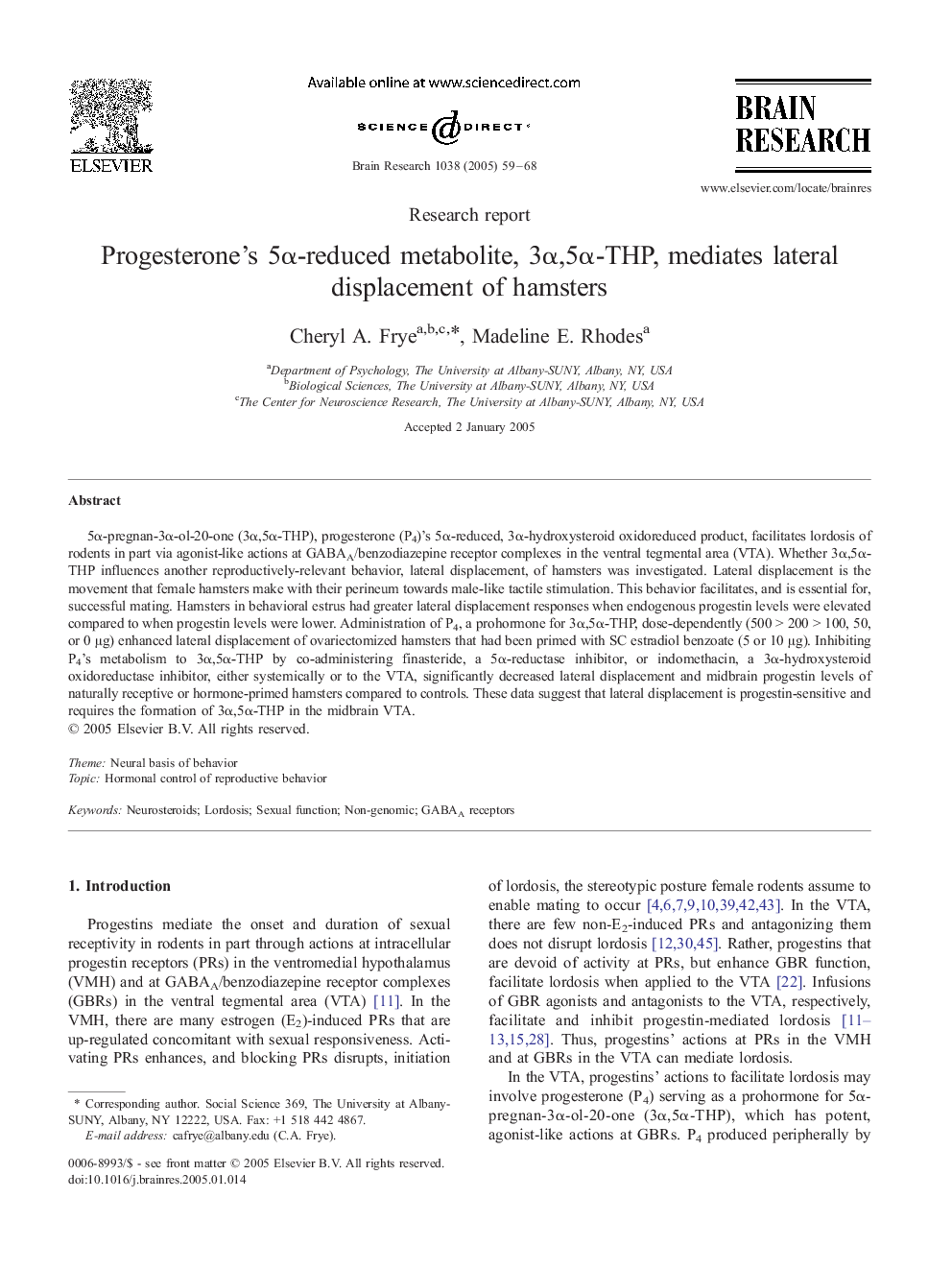| Article ID | Journal | Published Year | Pages | File Type |
|---|---|---|---|---|
| 9416707 | Brain Research | 2005 | 10 Pages |
Abstract
5α-pregnan-3α-ol-20-one (3α,5α-THP), progesterone (P4)'s 5α-reduced, 3α-hydroxysteroid oxidoreduced product, facilitates lordosis of rodents in part via agonist-like actions at GABAA/benzodiazepine receptor complexes in the ventral tegmental area (VTA). Whether 3α,5α-THP influences another reproductively-relevant behavior, lateral displacement, of hamsters was investigated. Lateral displacement is the movement that female hamsters make with their perineum towards male-like tactile stimulation. This behavior facilitates, and is essential for, successful mating. Hamsters in behavioral estrus had greater lateral displacement responses when endogenous progestin levels were elevated compared to when progestin levels were lower. Administration of P4, a prohormone for 3α,5α-THP, dose-dependently (500 > 200 > 100, 50, or 0 μg) enhanced lateral displacement of ovariectomized hamsters that had been primed with SC estradiol benzoate (5 or 10 μg). Inhibiting P4's metabolism to 3α,5α-THP by co-administering finasteride, a 5α-reductase inhibitor, or indomethacin, a 3α-hydroxysteroid oxidoreductase inhibitor, either systemically or to the VTA, significantly decreased lateral displacement and midbrain progestin levels of naturally receptive or hormone-primed hamsters compared to controls. These data suggest that lateral displacement is progestin-sensitive and requires the formation of 3α,5α-THP in the midbrain VTA.
Keywords
Related Topics
Life Sciences
Neuroscience
Neuroscience (General)
Authors
Cheryl A. Frye, Madeline E. Rhodes,
